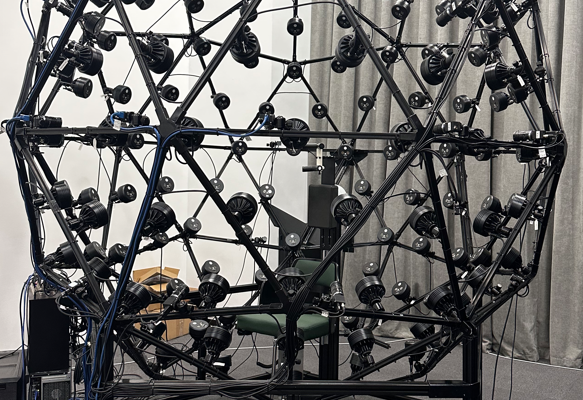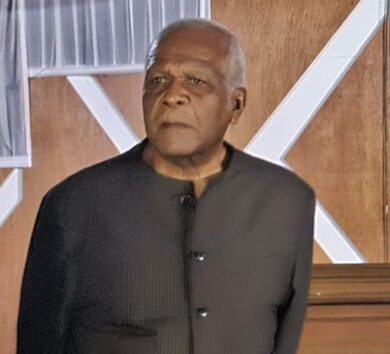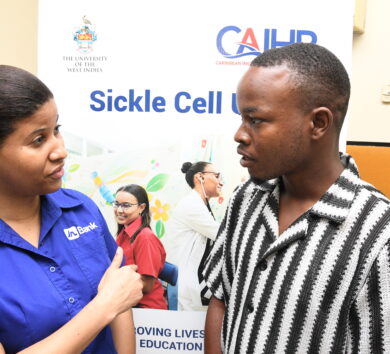

By Tiffany Holman in Beijing
On a tour of their innovation centre given by Wang Luning, the marketing director of LUSTER Light Technology Group, showcased what digital production is all about.
LUSTER is a company that focuses on innovative technologies in machine vision and fiber optics, aiming to become a world leader in machine vision AI and optoelectronic information industry.

Wang Luning briefly describes the four key equipment used in the production of virtual digital content:
-The light field reconstruction system
The light field reconstruction system includes the LuStage, a cutting-edge scanning technology that captures the human face with unparalleled fidelity and scientific accuracy.
-The motion capture system
The motion capture system is used to capture human movements, and has been used in many blockbuster movies, such as James Cameron’s Avatar.
–The XR production and broadcast system
The XR production and broadcast system is used to produce and broadcast virtual content
The digital human production solution
The digital human production solution is used to create digital human or object assets.
LUSTER has won awards for their technology, including a first prize in the State Technological Invention Award in 3D light stage technology and two second prizes of the National Award for Science and Technology Progress.
Wang Luning stated the following:
“As the leader, LUSTER had undertaken numerous major national science and technology projects, which greatly boosted the related scientific and industrial development of China.”
During the tour, Wang Luning shows two system demos: the static 3D scanning LuStage system and the dynamic 4D system.
He went further to explain, “LUSTER LightTech Co., Ltd. (LUSTER), focus on innovative technologies in machine vision and fiber optics, dedicated to become world leader of Machine Vision AI and Optoelectronic information Industry.
To “implant eyes and brains in machines”, LUSTER strategically focus on machine vision and computer vision technology and industry, providing our customer edge-cutting technology and solutions in application specific machine vision systems, smart vision equipment as well as core vision component. Adhered with “customer-centric”, LUSTER leverage its expertise to enable industries including electronic manufacturing, advanced display, packing printing, alternative energy, film & animation, scientific imaging, and railway transportation. With over 20 years knowledge and experience in optical imaging, vision software & algorithm, and core component, LUSTER kept on innovative, and committed to become the best, reliable, trustworthy, and honorable partner of our customers”.

“LightStage is a cutting-edge scanning technology that allows for the digital capture of the human face with unparalleled fidelity and scientific accuracy. LightStage efficiently captures how a subject’s face appears when lit from every possible lighting direction. From this captured imagery, specialized algorithms create realistic virtual renditions of the subject in the illumination of any location or set, faithfully reproducing the color, texture, shine, shading, and translucency of the subject’s skin. For over a decade, LightStage scans have been the blockbuster films and AAA game key production tool. LUSTER has won a first prize of the State Technological Invention Award in 3D light stage in 2012. The LuStage is based on original research with Tsing Hua University and combined with the industrial applications.
Here in this studio, we have 2 system demos: one is the static 3D scanning LuStage system. This one has the cutting-edge 3D imaging capture module with polarized adjustable light source and customized smart cameras which can generate different light field and grab the high accuracy and high fide data. And in our processing software the PBR based algorithm give us the power to produce the required digital human or digital object assets. Another one is our dynamic 4D system which can capture not only the face but also the body of the human, meanwhile this system allows the model to move and collection the dynamic 3D image data. The whole production procedure includes: Model Scanning, Model Carving, Network Topology, Color Mapping, Material Produce, Clothing Produce, Hair Produce and render.”

FZMotion/ Motion Capture-FZMotion System
Mr. Wang, “What we see now is that the optical motion capture system – FZMotion – is derived from the English frozen motion (stop motion animation), which means to freeze every frame of action, restore the essence of animation, and pay tribute to the century-old stop motion animation. In this small studio, we have set up 40+ optical motion capture cameras around us, which can achieve high-precision capture of drones, VR glasses and human bodies with sub-millimeter accuracy, and collect and restore the movements and trajectories of people or objects.
In less than two years since FZMotion was launched on the market, it has successfully supported the two Spring Festival Gala, the Winter Olympics Sign Language Broadcast Digital Human, the World Cup and other digital human performances, and the scientific research of several universities. This system includes the 12M and 26M pixel resolution, up to 180 fps high speed capture camera modules and SOTA calibration and binding software.
The green screen is the current relatively mature virtual shooting technology, combined with our FZMotion motion capture system, you can do some small virtual live broadcast activities”.

“XR virtual production is a new technology that subverts the traditional content production process and is a new trend in content production.”
Mr Wang explained that the system is made up of several components including an LED large screen, virtual camera tracking, real-time virtual rendering, and audio and lighting systems. The system allows for the production of immersive content that can include real people, virtual people, real scenes, and virtual scenes.
The camera captures the final picture of the content being produced, meaning that “what you see is what you get”. In other words, the camera shooting picture is the final product, giving viewers an accurate representation of what they are experiencing.
Mr. Wang noted: “At present, this technology has been applied in hundreds of programmes of China Central Radio and Television Corporation, and has appeared on the stage of CCTV’s Spring Festival Gala for three consecutive years”







Comments